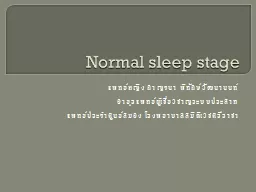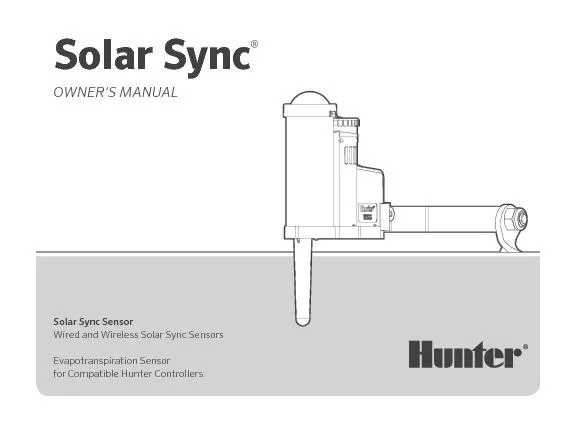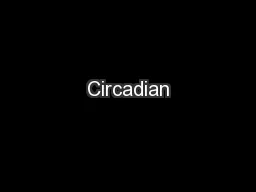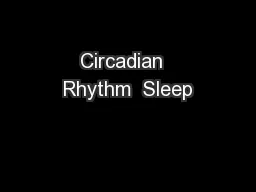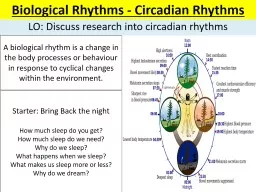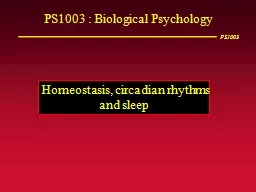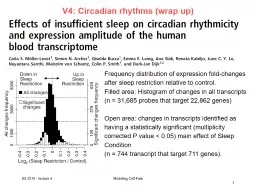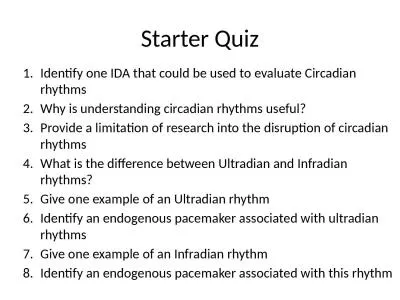PPT-Eating in Sync with Circadian Rhythms
Author : briana-ranney | Published Date : 2019-02-06
for Weight Loss and Metabolic Health Tamara Duker Freuman MS RD CDN May 20 2016 Objectives Describe state of current scientific knowledge on meal timing as
Presentation Embed Code
Download Presentation
Download Presentation The PPT/PDF document "Eating in Sync with Circadian Rhythms" is the property of its rightful owner. Permission is granted to download and print the materials on this website for personal, non-commercial use only, and to display it on your personal computer provided you do not modify the materials and that you retain all copyright notices contained in the materials. By downloading content from our website, you accept the terms of this agreement.
Eating in Sync with Circadian Rhythms: Transcript
Download Rules Of Document
"Eating in Sync with Circadian Rhythms"The content belongs to its owner. You may download and print it for personal use, without modification, and keep all copyright notices. By downloading, you agree to these terms.
Related Documents






